First of all, a big thank you to Igor, who helped me out with his expertise for this test. His new measuring station has already been presented here in more detail, but for the HS65 Surround it should now be used officially for the first time.
Measurement setup and basics
Now the moment of truth strikes, once again. And yet, from now on, some things are different and that’s exactly why I’ve linked up here on this page, because the parts are now also measured and that can only be done here in the laboratory. Let’s call it division of labor in finding the truth. The test setup is now final and the basis remains the well-known measurement microphone that has already proven itself for the in-ears. The suggestions for the realization I have found at Oratory and it does not hurt to visit there once.
In general, to measure the transmission behavior of headphones, one uses so-called couplers with clearly defined volumes and fixed, cleanly calibrated measurement microphones. The setup can be used just as well for plug-in headphones (in-ears) and small headphones (e.g. from hearing aids) as for simpler headphones and headsets as so-called on-ears (headphones with supraaural cushions). For such headphones (on-ear), the “artificial ear” according to IEC 318 is useful, which I have now followed with the implementation. In addition, the Creative AE-9 is used as a sound card, to which not only the measurement microphone is connected with low enough noise, but also the control of the headphones, as long as this is possible via analog jack. In any case, I use USB solutions in the original heatsets and if both are possible, as in this case, I also comparatively use both options. There is a separate article about the Creative Sound Blaster AE-9
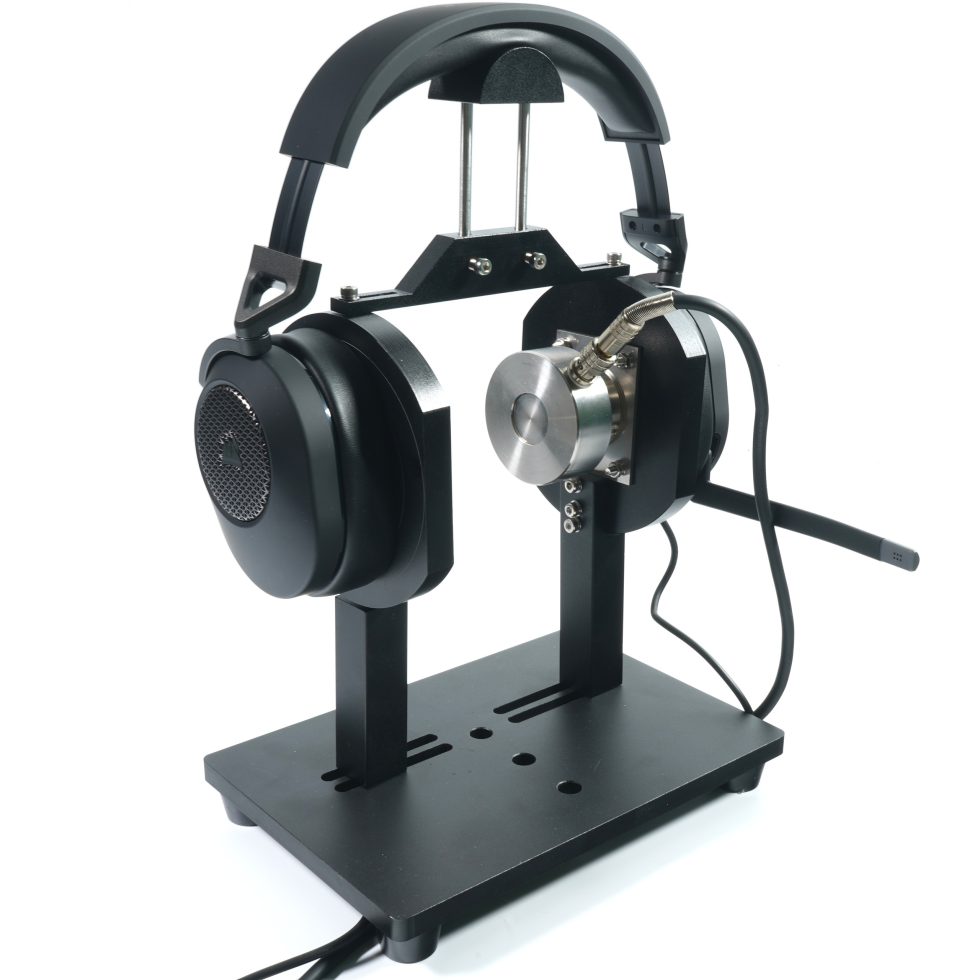
The thick over-ears, i.e. circumaural or ear-enclosing headphones, are not easy to handle when it comes to measurement and, above all, reproducibility. This is precisely why there are no truly standardized couplers yet. The reasons for this are due to difficulties in measurement technology and the many influencing factors that make reliable reproducibility almost impossible. Therefore, such circumaural headphones are mainly measured with appropriately modified couplers for supraaural headphones by using an additional flat plate as a support for the circumaural cushion (see picture above).
Important clue: The Harman curve
The so-called Harman curve is an (optimal) sound signature that most people prefer in their headphones. It is thus an accurate representation of how, for example, high-quality loudspeakers sound in an ideal room, and it shows the target frequency response of perfectly sounding headphones. Thus, it also explains which levels should be boosted and which should be attenuated based on this curve. This also explains the term “bathtub tuning”, which is often cited, but in which the Harman curve is completely overused and exaggerated.
For this reason, the Harman curve (also called the “Harman target”) is one of the best frequency response standards for enjoying music with headphones, because compared to the flat frequency response (neutral curve), the bass and treble are slightly boosted in the Harman curve. This “curve” was created and published in 2012 by a team of scientists led by sound engineer Sean Olive. At the time, the research also included extensive blind tests with different people testing different headphones. Based on what they then liked (or disliked), the researchers found and defined the most universally popular sound signature.
Headphone tuning can be really problematic because of the human anatomy. Everyone has a slightly different pinna and ear canal, which affects how individuals perceive certain frequencies. In extreme cases, there is a few dB difference from person to person, which then explains the small differences in some measurements with artificial ears. Furthermore, if the sound is not absorbed, it is additionally reflected by other surfaces. Theoretically, a torso could also be included in the test setup, but that would be far too time-consuming.
The Corsair HS65 Surround Headset without USB dongle directly on the amplifier
Let’s now move on to the first measurement, where I first connect the headset directly to the Creative Sound Blaster AE-9 in analog for a better comparison. The output impedance of the power amplifier is clearly below one ohm, so that especially in the bass range no impedance shifts and thus additional measurement errors occur. You can see the quite pronounced bathtub very nicely, but it weakens a bit in the bass. However, the problem here is not so much the drop in the low bass below 40 Hz, which is easily tolerable. What bothers me a bit is the very pronounced upper bass, which leads to a somewhat unpleasant “cardboard sound” from 200 Hz. Insiders know this from the party basement, where cheap Chinese scratch boxes boom and drone. I would have preferred to see the hump of the curve a bit more to the left, but ok, it’s a gaming headset. The dark curve is the Harman target.
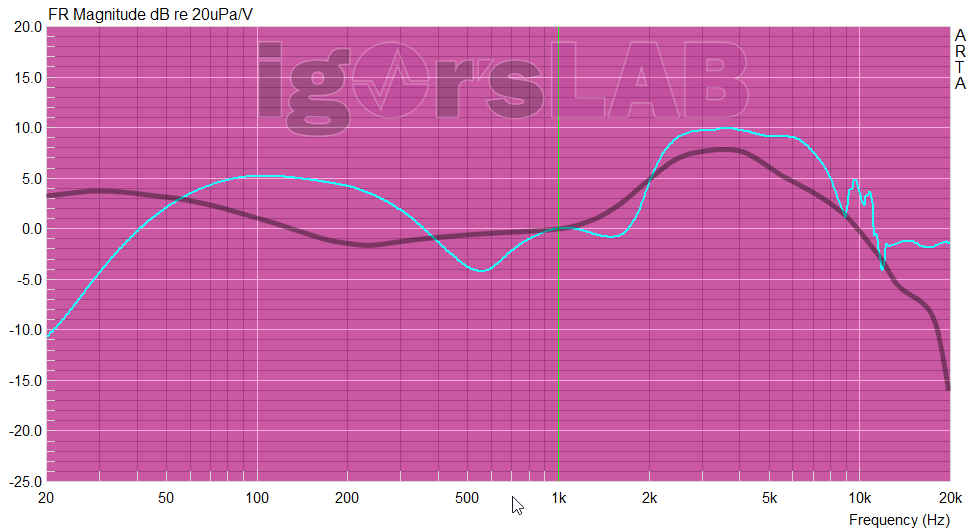
The range of the lower mids collapses a bit because the bass pushes everything into the background a bit. However, the dip at around 550 to 600 Hz is not really noticeable, even if it spreads some coolness because the fundamental frequencies weaken a bit towards the top. At 2.5 to 3 KHz we see the aurally induced level rise, which is somewhat stronger than the ideal line of the Harman curve. The drivers also jitter a bit in the super high frequencies at about 10 KHz, but this will hardly be subjectively noticed during gaming. But we will see this area again in a moment. It is also interesting that the drivers still play cleanly up to 20 KHz, which is also not a matter of course. However, you will hardly hear it anymore. The bottom line is that it looks quite good when connected directly to a decent amplifier. So you can also listen to music with them, even if they are not hi-fi headphones. But it’s not a toot either, just a bit top heavy on the upper bass. You can like that, or not (like me).
The Corsair HS65 Surround Headset with USB dongle in software
Let’s move on to the second measurement, where I now connect the headset to the included USB sound solution. The output impedance is difficult to estimate and I don’t have enough time for complex measurements. But let’s now take a look at the curve in the so-called “Pure Direct” mode. For whatever reason, the bass drops quite a bit below about 150 Hz. The rest of the curve can be left as it is, even though a blatant treble drop is now measurable in the super high frequencies, which can also be heard. That sounded much better. “Pure” is nothing there, even if the cardboard sound is almost completely gone. However, the complete bass sinks discouraged into triviality.
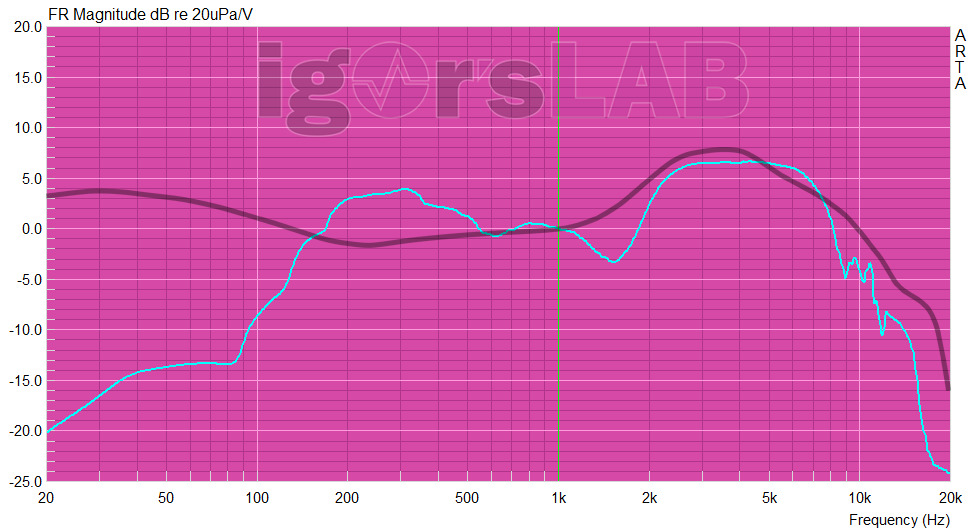
Let’s see if the “Bass Boost” mode can do a better job. But now Aunt Helga’s party cellar is in a dancing mood again and the bear is dancing at 200 Hz. The range between 30 and 40 Hz has been raised considerably, even though the drivers are not capable of doing so. The result is a slight drop in level stability and a dent at 70 Hz. At the top you also push the treble at 8 KHz way too much, the rest then fits again. I would probably prefer this mode the least.
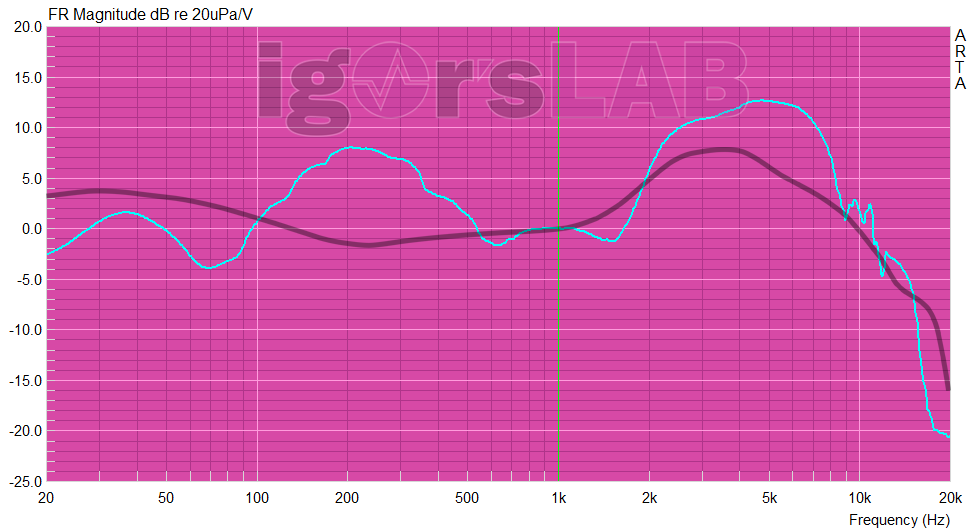
But it is a gaming headset, and so we now move on to the preset mode “FPS Competition”. Ooops, what happened there? Especially towards 45 Hz there is an extreme dip, while further down there is another upswing. In return, there is a conciliatory finish at the upper end.
Cumulative spectra (CSD, SFT, Burst)
The cumulative spectrum refers to various types of graphs showing time-frequency characteristics of the signal. They are generated by sequentially applying the Fourier transform and appropriate windows to overlapping signal blocks. These analyses are based on the frequency response diagram already shown above, but additionally contain the element of time and now show very clearly as a 3D graphic (“waterfall”) how the frequency response develops over time after the input signal has been stopped. Colloquially, such a thing is also called “fading out” or “swinging out”. Normally, the driver should also stop as soon as possible after the input signal is removed. However, some frequencies (or even whole frequency ranges) will always decay slowly(er) and then continue to appear in this diagram as longer lasting frequencies on the time axis. From this, you can easily see where the driver has glaring weaknesses, perhaps even particularly “clangs” or where resonances occur in the worst case and could disturb the overall picture.
Cumulative Spectral Decay (CSD)
Cumulative spectral decay (CSD) uses the FFT and a modified rectangular window to analyze the spectral decay of the impulse response. It is mainly used to analyze the driver response. The CSD typically uses only a small FFT block shift (2-10 samples) to better visualize resonances throughout the frequency range, making it a useful tool for detecting resonances of the transducer. The picture shows very nicely the transient response and some present bass resonances in the upper bass. It has to come from somewhere. The diaphragm resonates slightly below 250 Hz. Lousy, highly compressed MP3 files or lousy YouTube streams are crystallized a bit in the treble by the peaks, but with very good recordings this is already a bit too much for me. You can love it, but you don’t have to hate it. Actually, it fits quite well.
Short-time Fourier Transform (STF)
The Short-time Fourier Transform (STF) uses the FFT and Hanning window to analyze the time-varying spectrum of the recorded signals. Here, one generally uses a larger block shift (1/4 to 1/2 of the FFT length) to analyze a larger portion of the time-varying signal spectrum, especially approaching application areas such as speech and music. In the STF spectrum we can now also see very nicely the work of the drivers, which afford various weaknesses in some frequency ranges. This “dragging” at the lower frequencies below 500 Hz is then repeated and at about 2.5 to 3 kHz and then there is also the jittery whip in the super high frequency at about 10 Khz.
Burst Decay
In CSD, the plot is generated in the time domain (ms), while the burst decay plot used here is represented in periods (cycles). And while both methods have their advantages and disadvantages (or limitations), it’s fair to say that plotting in periods may well be more useful for determining the decay of a driver with a wide bandwidth. We see a strong resonance oscillation in the upper bass with the maximum at about 200 Hz, a couple of small lags around 2 to 3 kHz and later a peak between about 8 and 12 kHz. But at least the treble is nothing that is subjectively perceived as a real negative. However, the bass is not only audible, but also visibly a bit too muddy and pop-like here.
Interim summary
With that, my part is already done and it has not become a review. Only the warning not to overdo it with the upper bass and if necessary adjust something in the iCUE software. Then it doesn’t boom so much either. The USB dongle with the built-in sound solution is unfortunately only mediocre and obviously has an impedance problem in the low bass. I can’t explain the dent and the bass drop any other way. I had not changed the measurement setup, nor had I lifted off the headset or repositioned it in any other way. The last control measurement without dongle was then again without this dent.
Microphone check
Enclosed is the obligatory short microphone test of the HS65 Surround:
The microphone offers a very decent voice quality and trumps the volume of the HS80 RGB even without the Mic Boost. The Mic Boost is therefore practically unnecessary and only massively increases the noise floor of the microphone.















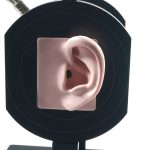
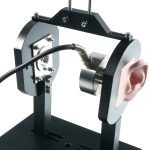
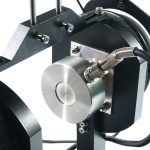
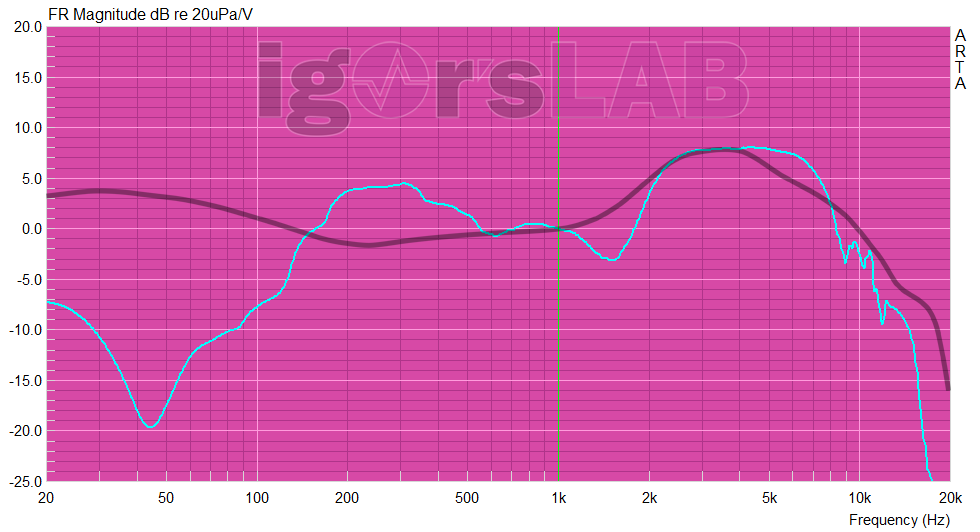
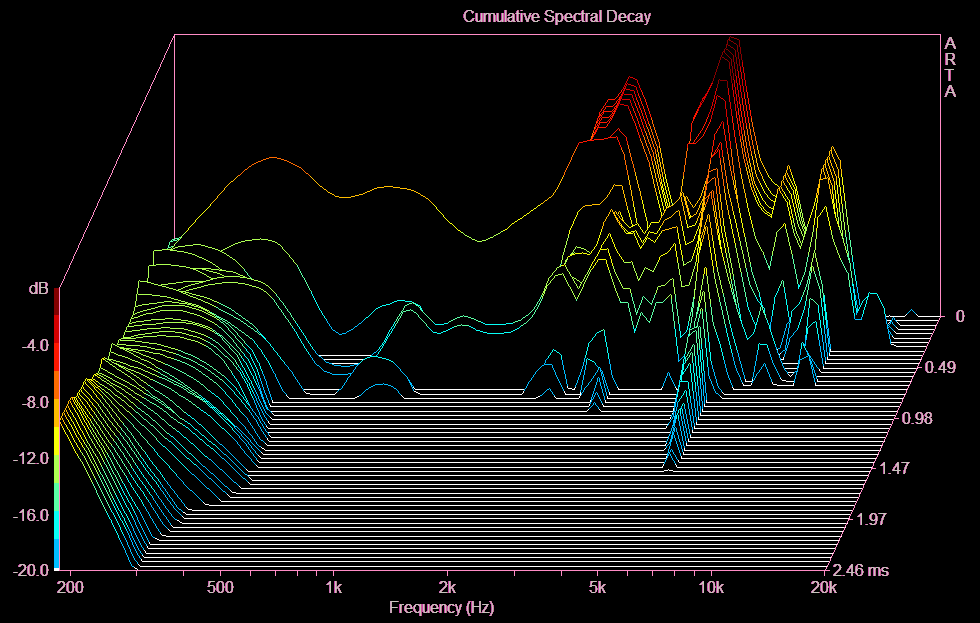
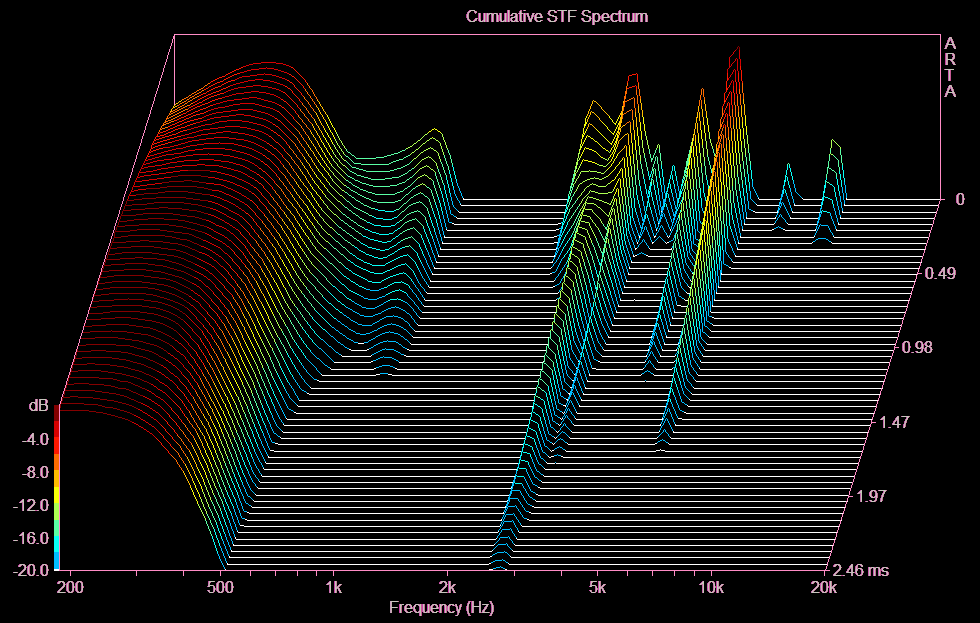
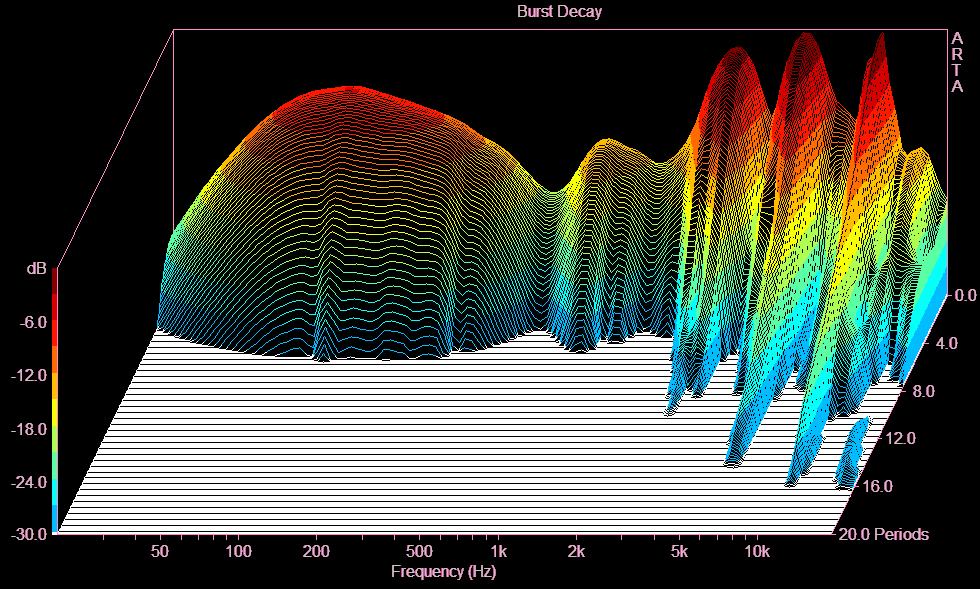


















3 Antworten
Kommentar
Lade neue Kommentare
Urgestein
Veteran
Alle Kommentare lesen unter igor´sLAB Community →